

Analytical & Physical / ChemBio Seminar
Thursday, December 14, 3:30-4:30pm, WEL 2.122
Associate Professor
University of Arizona
Abstract: Due to their important biochemical roles, membrane proteins are important drug targets. Although lipids can influence membrane protein function, the chemistry of lipid binding remains difficult to study because protein-lipid interactions are polydisperse, competitive, and transient. We have been developing new analytical approaches to quantify protein-lipid interactions in bilayers and understand how membrane proteins remodel their surrounding lipid environment. In one new approach, we are using lipidomic mass spectrometry (MS) to quantify the exchange of lipids between lipoprotein nanodiscs with and without an embedded membrane protein. Shifts in the lipid distribution towards the membrane protein nanodiscs reveal lipid binding, and titrations allow measurement of the optimal lipid composition for the membrane protein. We have also been studying how lipids bind to specific sites on membrane proteins. Here, we mutate different potential lipid binding sites on the membrane protein surface and simultaneously measure binding to the mutant and wild type versions with native MS. By performing these experiments at different temperatures, we uncover the thermodynamics of lipid binding to specific residues and discover the relative affinities of different lipid binding sites. Ultimately, we expect these unique combinations of nanodiscs and MS will provide new insights into how lipids modulate the structure and function of membrane proteins.
Faculty Recruiting Seminar
Monday, December 4, 3:30-4:30pm, WEL 2.122
Postdoctoral Fellow
UC Berkeley
Ph.D, Harvard, 2021 (Theodore Betley)
Abstract: The selective activation and functionalization of small molecules is a significant hurdle to address contemporary energy-related challenges. Major sources of energy consumption include catalysis to produce value-added commodity chemicals and separations to purify chemical feedstocks. In pursuit of addressing these objectives, I will discuss my research findings on destabilizing metal–ligand bonds to both enable selective C–H functionalization and enhance chemical separations. I will initially discuss the characterization of the first isolable copper–nitrene reactive intermediate, which exhibits ligand field inversion such that the unpaired electron density resides predominantly on the nitrene fragment, promoting alkane amination and alkene aziridination. I will subsequently discuss the translation of elementary organometallic transformations into chemical separations via the reversibility insertion of industrially important small molecules into labile metal–ligand bonds within porous materials. Importantly, the thermodynamic and kinetic landscape of these reversible chemical reactions allows for the decarbonization of high-temperature CO2-emitting processes at their relevant operating temperatures, providing fundamentally new terrain in the design space of adsorbent-based separations.
Organic Seminar
Friday, December 1, 3:30 - 4:30pm, WEL 2.122
Professor
University of Alberta
Abstract: microRNAs (miRNAs, miRs) are small non-coding RNA that tune protein expression through modulation of mRNA. The canonical view of miRNAs is that they are posttranscriptional repressors, binding to the 3’-untranslated region (UTR) of mRNA and causing mRNA destabilization and/or loss of translation. Recently my laboratory developed a high throughput assay, termed miRFluR, for mapping miRNA regulation of a protein. We applied this technology to understanding regulation of glycosylation and and discovered, contrary to expectations, miRNA predominantly upregulate the protein expression of some messages. Our results upend common assumptions surrounding miRNA, arguing that upregulation by these non-coding RNA is common. In this presentation, we will discuss our latest work on miRNA-mediated protein upregulation and the underlying molecular mechanisms.
Faculty Recruiting Seminar
Thursday, November 30, 3:30-4:30pm, WEL 2.122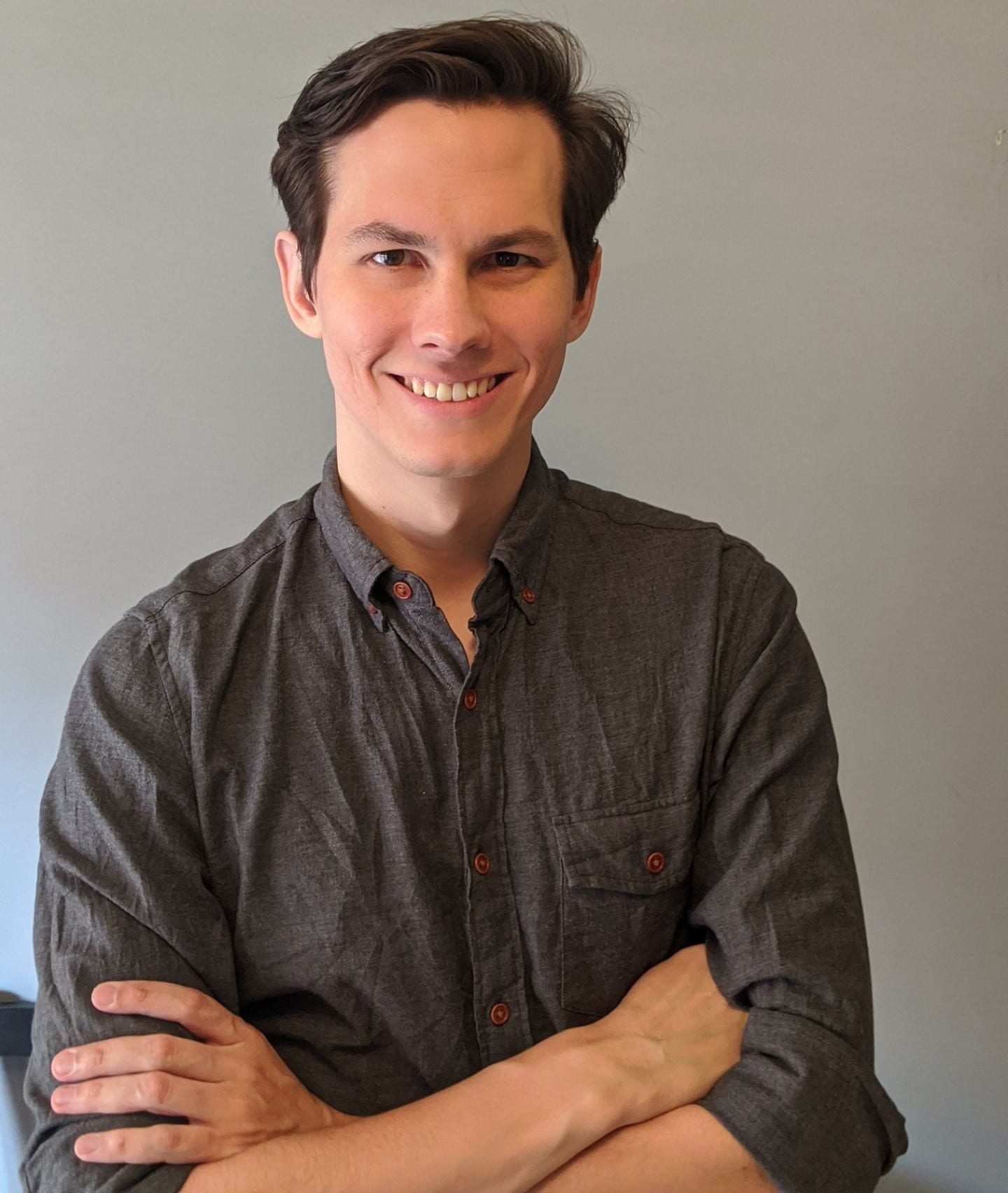
Postdoctoral Researcher
University of Chicago
Ph.D, Northwestern University, 2020 (Danna Freedman)
Abstract: Synthetic chemistry enables the modulation of molecular structures with atomic precision, thereby providing a valuable platform for answering questions from physics to biology. This seminar will focus on the applications of synthetic chemistry in two different contexts. First, I will discuss synthetic inorganic chemistry as a tool to understand magnetism at the molecular level. In this context, the study of the magnetoelectronic properties of precisely engineered heterobimetallic complexes enabled us to learn about the influence of spin-orbit coupling on the magnetic properties of high-spin transition metal ions both directly and indirectly bound to heavy diamagnetic ions. I will then pivot to discussing the development of new synthetic methodologies relevant to applications in discovery chemistry. The discovery, optimization, and applications of a novel site-specific benzene-to-pyridine transformation will form the basis of this discussion.
Organic Seminar
Friday, November 17, 3:30 - 4:30pm, WEL 2.122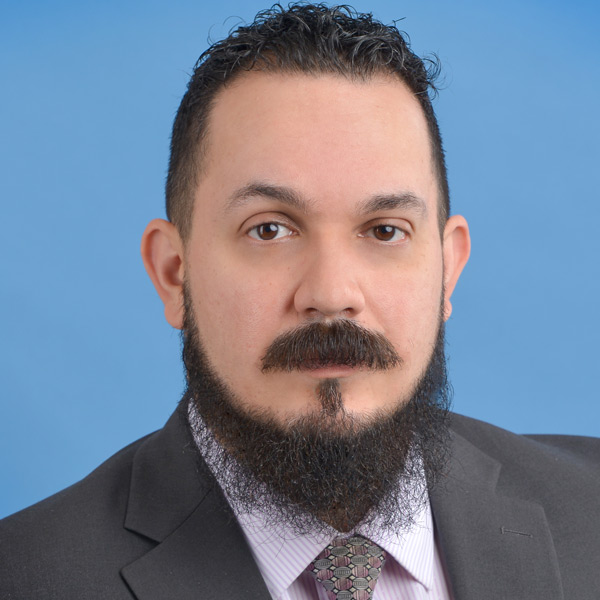
Associate Professor
TAMU - Corpus Christi
Abstract: Stimuli-responsive materials, such as hydrochromics, have found mass usage and profitability in manufacturing and process control. By incorporating competing n-to-pi* and pi-to-pi* charge transfer interactions into charge transfer-based functional supramolecular materials, we have developed materials which exhibit tunable solid state hydrochromism. This optical behavior is triggered upon the reversible formation of non-stoichiometric hydrates which can be exploited for the production of thermochromes. This methodology has proven to be an ideal strategy to construct processable optically responsive multifunctional assemblies. These assemblies are composed of bis-bipyridinium-derived acceptors and a series of synthetic and commercially available donors – including the neurotransmitter melatonin and its analogue bioisosteres. By tailoring the chemical structure of the donors and/or the acceptors, the strength of the charge transfer interactions can be tuned with concomitant changes in their hydrochromic/thermochromic properties. Hydrochromic/thermochromic aerogels and inks of these materials can be prepared, with a large selection of colors, in environment-friendly solvents and demonstrate tunable thermochromic transition temperatures ranging from 45 to 105 C. Favorable compatibility of these materials with commercial inks and inkjet printers affords excellent pattern quality with extended color options. We have also serendipitously found examples of solid state fluorescence hydrochromism in 1,8-napthalimide-based emissive compounds. This work prompts us to remind the community that relative humidity is typically an uncontrolled for variable that can fluctuate widely depending on geographical climate, weather fluctuations, and building HVAC system stability. Care should be taken to evaluate the impact of variations in RH when characterizing the solid state emission and charge transfer absorption properties of charged materials.
Analytical & Physical / ChemBio Seminar
Thursday, November 9, 3:30-4:30pm, WEL 2.122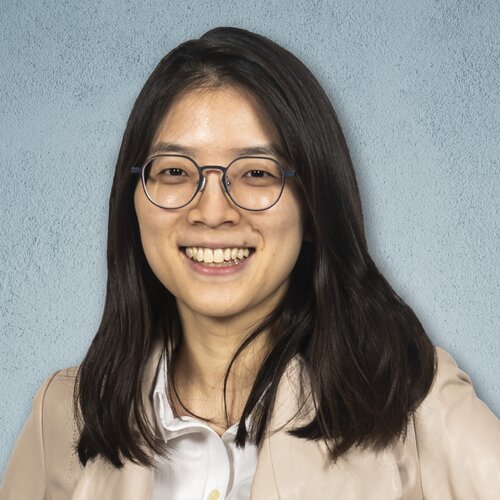
Assistant Professor
University of Illinois Urbana Champaign
Abstract: My research focuses on developing biophysical and analytical tools for data-driven systems biology. We integrate advances in chemistry, engineering, and data science to characterize native biological systems at unprecedented resolution and details and to quantitatively profile the fundamental mechanisms that govern the system’s ensemble behavior. We have pioneered 'Single Virus Genomics' by developing microfluidic platforms that enable direct profiling of individual virus genomes, bypassing the need for virus culture. This technology allows large-scale, unbiased profiling of single virus genomes, enabling a quantitative assessment of viral evolution and infection dynamics. In parallel, we are actively developing and applying spatial omics tools to leverage spatial information to identify the key molecular and cellular features that drive system-level phenotypes. Molecular and cellular interactions are mediated by physical contact. Thus, the spatial organization of molecules and cells is strongly linked to their functional organization. In my talk, I will present our technical innovations in achieving single virus sequencing and demonstrate the application of this novel technology in the quantitative assessment of influenza reassortment. Reassortment is a crucial mechanism for zoonosis, facilitating the transmission of viruses from animals to humans. Thus, analysis of reassortment statistics between natural influenza strains provides valuable insights into influenza evolution and emerging human strains. In addition, I will present insights gained from a spatial transcriptomics map of the honey bee brain, demonstrating how spatial information reveals new biological insights into the collective performance of molecules and cells in system-level functions.
Analytical & Physical Seminar
Wednesday, November 8, 3:30-4:40 PM, WEL 2.122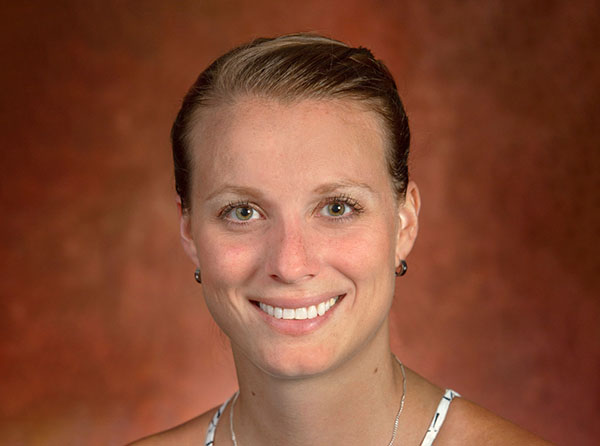
Assistant Professor
Florida State University
Abstract: Triplet generation at a hybrid inorganic/organic semiconductor interface is a very promising approach to increase the (photo-)excited state recombination lifetime, and thus, facilitate solar energy harvesting. Possible applications using the generated spin-triplet excitons are photon upconversion and photocatalysis. Photon upconversion describes the process of shortening the wavelength of the light emitted after irradiation, resulting in a net gain in photon energy. Here, upconversion occurs by combining multiple low energy photons to a single high energy photon through a process called triplet-triplet annihilation. Since direct optical excitation of triplet states is ‘spin-forbidden’, so-called sensitizers are required to indirectly populate the triplet state by energy or charge transfer. Currently, triplet sensitizers span a broad range of material classes including metal-organic complexes, nanomaterials, and bulk perovskite films. Understanding the fundamental energy transfer mechanism is crucial for the advancement of optoelectronic devices based on this process. The exact triplet sensitization mechanism varies depending on several factors including: (i) the absolute alignments of the sensitizer and acceptor energy levels. (ii) The exciton binding energy in the sensitizer, resulting in excited states in form of excitons or free carriers. (iii) The local trap density, which can impact doping levels and band bending. Here, I will present the current understanding of triplet generation at the bulk perovskite/organic interface.
Analytical & Physical / ChemBio Seminar
Sigma Aldrich Lecture Series
Thursday, November 2, 3:30-4:30pm, WEL 2.122
Professor
Purdue University
Abstract: Crystal engineering tests our understanding of molecular interactions and holds great promises for many technological applications, e.g. serving as separation matrices, as hosts for catalysts, and as media for material storage. DNA as a programmable biomolecule provides a general and powerful tool for crystal engineering and nano-constructions. Though a series of engineered 3D DNA crystals have been reported, they exhibit only modest quality of 3D order with modest X-ray diffraction resolutions. Such modest resolutions limit the applications of DNA crystals such as organizing guest molecules into hybrid crystals for structural determination by X-ray diffraction. An urgent and critical problem is how we can engineer highly ordered DNA crystals. Herein, we have developed a class of DNA motifs that can self-assemble into predesigned, well-ordered, 3D crystals that diffract to high resolutions. The crystals have programmable space groups through the fine tuning of the molecular designs. Each DNA motif consists of only two short DNA strands, either identical or different. The precise molecular arrangement in the crystals has been confirmed by X-ray diffraction to unprecedentedly high resolution. As a result, these DNA crystals can precisely order guest molecules in 3D space. We anticipate that the highly ordered DNA crystals would be a starting point for a new set of studies within DNA nanotechnology and facilitate the realization of many previously proposed applications that need well-ordered, high-resolution, structural arrangements. As such, we foresee using these crystals as a platform for structural determination of guest molecules, and as scaffolds to organize catalysts for cascade chemical reactions.
Organic Seminar
Monday, October 30, 3:30 - 4:30pm, WEL 2.122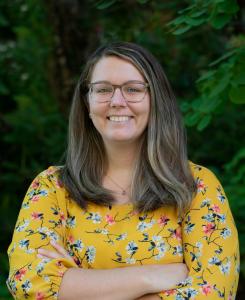
Assistant Professor
University of Oregon
Abstract: Surface Organometallic Chemistry is an approach to synthesizing heterogeneous catalysts with molecular precision and relies on knowledge of homogeneous organometallic reactions. In our lab, we aim to install active sites on surfaces using oxidative addition of low-valent metal centers to surface functional groups. This strategy is a complementary route to the more common approaches (e.g., protonolysis of metal-ligand bonds by acidic surface sites) taken in surface organometallic chemistry. Using our approach, we developed a heterogeneous nickel-hydride catalyst that is highly active and selective for alkene isomerization. This reaction development was enabled by our work on homogeneous N-heterocyclic carbene-nickel catalysts for both alkene isomerization and hydrosilylation, which both utilize a nickel-hydride complex as the active catalyst. To further enable our oxidative addition strategy, we developed and mechanistically investigated novel molecular reactions with the goal of translating that knowledge to surface chemistry; we elucidated the mechanism of the oxidative addition of palladium(0) complexes to molecular silyl hydrides and then translated that reactivity to silica-supported silyl hydrides. Current efforts in our group are focused on developing the oxidative.
Analytical & Physical Seminar
Thursday, October 26, 3:30-4:30pm, WEL 2.122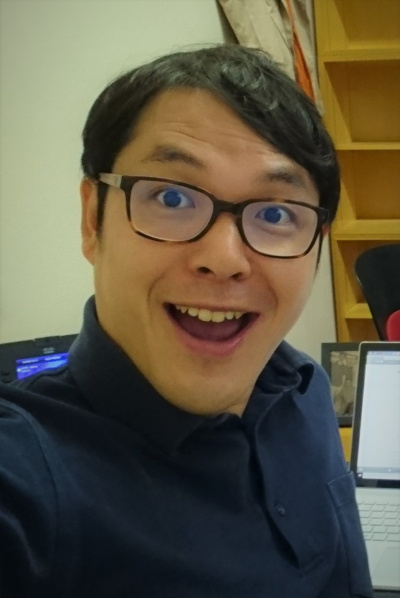
Assistant Professor
University of Geneva
Abstract: Self-organization of individual atoms/molecules into ordered structures results in the emergence of various physical properties. A fascinating aspect of the self-assembly is that atoms and molecules can choose slightly different packing structure that severely changes the resulting property. In a wide range of scientific to industrial researches, it is critical to control the structure of the assembly so that a desired property can be obtained. The microscopic description of how the “birth of morphology” occurs is yet to be established, which prevents one from rationally design the property of matters in solid phase. The biggest challenge to experimentally probe the birth of morphology (i.e. nucleation process) is the stochastic and heterogenous nature of the nucleation occurring at nanometer scale. This has been particularly detrimental for the application of optical spectroscopy in this field. In our group, we have been developing in-situ optical spectroscopy tool to address this problem and establish microscopic understanding of the early stage of nucleation and growth of matters. The first technique I will highlight is called Single Crystal Nucleation Spectroscopy (SCNS). SCNS is based on the combination of optical trapping and Raman microspectroscopy, which confines one crystal nucleation event under a Raman probe light. This technique allows us to follow the Raman spectroscopic feature of one crystal nucleation at a time at the tens of ms time resolution. Through the spectral analysis, we could identify the formation of prenucleation aggregates as well as polymorph formation pathway on glycine crystallization in water. Using this technique, we are currently investigating how molecular additives alters the crystal nucleation pathway and leads to different polymorphs. The second technique I will highlight is called time-resolved dynamic light scattering microscopy (time-resolved micro-DLS). DLS is a commercially available tool to characterize the particle size in solution at the range of nm to µm. While it is quick and easy to use, it is applicable only for a static system because the measurement typically takes tens of seconds to minutes. To follow the formation of nucleus and growth in solution, it is desirable to improve the time resolution of this technique to ms time scale. We have developed a system and software that allows one to extract the particle size distribution of solution from light scattering data as quick as 40 ms acquisition. I will show the results obtained on model nanoparticle systems to highlight its capability of characterizing monomodal and multimodal size distributions (static system, not the size evolution yet) at tens of ms time resolution. This technique will widely broaden the application of DLS towards the non-static system in which the particle size distribution evolves over time.
FormulaChem Symposium
Anslyn, Iverson, Sessler Lectureship in Chemistry
Friday, October 20, 3:30-5:30pm, WEL 2.122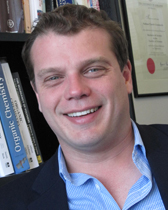
Professor
Northwestern University
Abstract: TBD
FormulaChem Symposium
Anslyn, Iverson, Sessler Lectureship in Chemistry
Friday, October 20, 3:30-5:30pm, WEL 2.122
Professor, Chemical & Biochemical Engineering
University of Pennsylvania
Abstract: Considerable attention has been directed towards the development of membranes based on highly uniform structures formed by molecular self-assembly. Such systems open the possibility of overcoming the selectivity-permeability tradeoff that is intrinsic to the operation of current state-of-the art membranes in use in a wide variety of settings. Here, we examine lyotropic self-assembly of reactive amphiphiles into gyroid and direct hexagonal mesophases, the scalable fabrication of highly-ordered nanostructured polymer thin films from such mesophases, and the performance of the resulting membranes. We consider a variety of scenarios, including molecular filtration in aqueous and non-aqueous media, and ion transport. These membranes are compelling as they circumvent the limitations of pathway tortuosity and size-dispersity of transport-regulating features found in conventional membranes. As such, they enable highly selective, or precise, molecular separations and ion transport, with pore-size tunable in steps as small as 0.1 nm. We present results highlighting how these precisely-defined membranes are enabling the development of new insight regarding molecular transport under nanoscale confinement in the presence of charge, something that is poorly understood from a fundamental perspective.
FormulaChem Symposium
Anslyn, Iverson, Sessler Lectureship in Chemistry
Friday, October 20, 3:30-5:30pm, WEL 2.122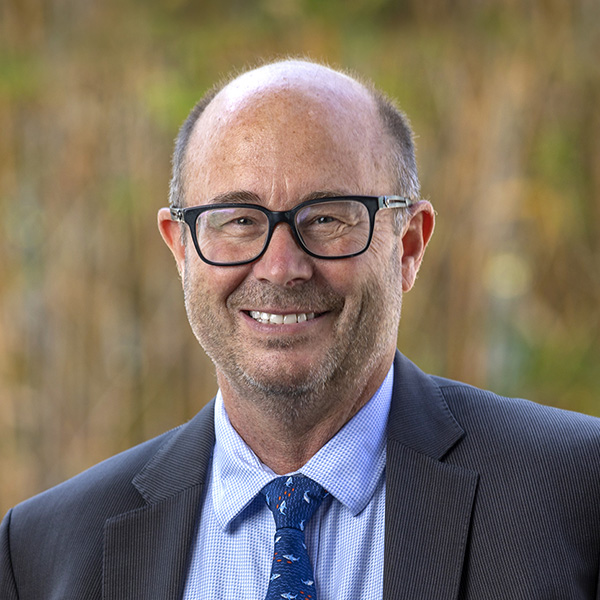
Professor
Scripps Research
Abstract: The cellular protein homeostasis, or proteostasis network regulates proteome function by controlling ribosomal protein synthesis, chaperone- and chaperonin-mediated protein folding, protein trafficking, proteasome and lysosomal-directed protein degradation, and related processes. Stress-responsive signaling pathways match proteostasis network capacity with demand in each subcellular compartment to maintain or alter cellular homeostasis. The beginning of the seminar will focus on how a protein homeostatic deficiency leading to neurodegeneration and/or organ deterioration in an aging-associated amyloid disease can be stopped or slowed utilizing small molecule kinetic stabilizers. The clinical efficacy of tafamidis, a transthyretin kinetic stabilizer, will be covered in the context of what we have learned about amyloid diseases and what remains to be learned. The data strongly support the hypothesis that protein aggregation is the driver of degeneration in these patients. Very recent progress made by others regarding the pharmacological slowing of the progression of Alzheimer’s disease and superoxide dismutase-associated Amyotrophic lateral sclerosis will also be covered. The second part of the talk will focus on where we are headed to discover a single drug that will ameliorate most amyloid diseases. We discovered drug candidates that adapt proteostasis by enhancing lysosomal flux via a high throughput lipid droplet clearance screen. One of these compounds clears the alpha-synuclein aggregates thought to cause Parkinson’s disease in neurons. Another of these mTOR inhibitor-independent autophagy activator hits reduces cytotoxic axonal mutant prion protein aggregate levels, normalizing axonal trafficking deficiencies, while also clearing phosphorylated insoluble tau associated with tauopathies including Alzheimer’s disease.
FormulaChem Symposium
Anslyn, Iverson, Sessler Lectureship in Chemistry
Friday, October 20, 3:30-5:30pm, WEL 2.122
Professor
University of Oregon
Abstract: This talk will provide a brief overview of supramolecular chemistry pursuits in my research group. I will then specifically describe the development of modular, inherently fluorescent receptors as "supramolecular" hosts for small molecules and ions. Throughout the talk, structural studies will highlight the group’s design strategies in "anion coordination chemistry". The talk will provide a brief historical overview of a class of urea receptors that form 1:1 complexes with halides and other anions in solution and the crystalline state. This receptor class exhibits tunable “off-on” or “on-off” fluorescence in the presence of anions, depending on the placement of electron-donating and -withdrawing groups on the host. Fundamental studies on the nature of interactions between anions and their hosts will also be discussed. As one key example, CH•••X– hydrogen bonds have emerged as important components of anion receptor design. This field is now beyond asking "Do CH hydrogen bonds exist?" with numerous examples of strong CH hydrogen bonds well-characterized in synthetic and biological systems; however, our understanding of the fundamental factors controlling their strength and selectivity remains limited. Investigations into the nature of the C-H•••anion hydrogen bond and efforts to target “non-traditional” anions will be described. The receptor class features a key aryl CH hydrogen bond donor at its core. Substituent effects on CH hydrogen bonds reveal an influence on anion binding strengths and selectivities, suggesting the possibility may exist to use these "non-traditional hydrogen bonds" to bias anion recognition. In fact, sulfur-based hydrogen bond acceptors appear to be particularly attracted to certain CH donors, suggesting this is a privileged interaction motif for molecule/ion recognition of sulfur compounds. The electron withdrawing groups used to polarize aryl CH hydrogen bonds can also result in aromatic rings that feature “halogen bonding” and/or “anion-π” type interactions to bind anions; these interactions and associated solvent effects play a key role in this story at times as well. The talk will conclude with a discussion on new directions to translate the fundamental physical organic chemistry into functioning sensors.
Analytical & Physical / ChemBio Seminar
Thursday, October 19, 3:30-4:30pm, WEL 2.122
Fellow, JILA
University of Colorado / NIST
Abstract: Atomic force microscopy (AFM)-based single-molecule force spectroscopy enables a wide array of studies, from measuring the strength of a ligand-receptor bond to elucidating the complex unfolding pathway of individual membrane proteins. Such studies and, more generally, the diverse applications of AFM across biophysics and nanotechnology are improved by enhancing the force stability, force precision, and time resolution of bioAFM. For an advanced, small-format commercial AFM, we uncovered how these three metrics were limited by the cantilever itself rather than the larger microscope structure, and then describe three increasingly sophisticated cantilever modifications using a focused ion beam that yielded enhanced data quality. High-precision single-molecule studies of membrane proteins—the target for over 50% of current and future drugs—have lagged analogous studies of globular proteins due to such instrumental limitations. We revisited the unfolding of the canonical membrane protein bacteriorhodopsin (bR) embedded in its native lipid bilayer with a 100-fold improvement in time resolution and a 10-fold improvement in force precision. The resulting data revealed the unfolding pathway in unprecedented detail. Toward the broader goal of measuring quantitative energetics, we leveraged the rapid and reversible initial unfolding of bR to determine the free-energy change (ΔΔG0) for select point mutants. Hence, we established a platform for precisely quantifying membrane-protein energetics under native-like conditions. We then extended this assay to quantify a light-induced energetic change in bR’s photocycle by briefly illuminating the sample with sub-ms light pulses. I will conclude by discussing extensions of these enhancements to other diverse biomolecules, including nucleic-acid structures and globular proteins involved in pathogenesis.
Analytical & Physical Seminar
Thursday, October 12, 3:30-4:30pm, WEL 2.122![]()
Chiba University (Japan)
Abstract: Understanding the structure and charge transport properties of organic devices is crucial for improving the device performance. For example, organic light emitting diodes (OLEDs) have a characteristic multilayered structure, where each organic layer has a different function. Therefore, it is necessary to investigate the carrier state at the buried organic interfaces inside the OLEDs during operation for the development of high-performance and highly reliable OLEDs. Second-order nonlinear optical spectroscopy, such as sum frequency generation (SFG), is a powerful technique for probing charge carrier behavior at specific interfaces of the inside of the organic devices. The electric-field induced SFG (EFI-SFG) can probe the charge accumulation behavior of the various organic devices at the molecular level. We shall present and discuss some selected results recently obtained on the following:
A series of experimental EFI-SFG measurements demonstrates that this technique is an effective operando analytical tool for investigating the carrier behavior of the buried interfaces in the various kinds of multilayer organic devices, even with complicated operating mechanisms.
Inorganic Seminar
Wednesday, October 4, 3:30-4:30pm, WEL 2.122
Professor
University of Cambridge
Abstract: Research in the Scherman Group focuses on dynamic supramolecular self-assembly at interfaces through the application of macrocyclic host-guest chemistry using cucurbit[n]urils (CB[n]) for the development of novel supramolecular systems. Control over these molecular-level interactions is exploited to design and fabricate soft materials with integrated function, including hydrogels for local drug-delivery, and hybrid materials for sensing, catalysis and energy storage applications.
Analytical & Physical / ChemBio Seminar
Thursday, September 28, 3:30-4:30pm, WEL 2.122
Associate Professor
University of Washington
Abstract: Small molecule and protein signals provide a rich vocabulary for cellular communication. This talk will highlight new enabling methods to study chemical mechanisms underlying disease—spanning methods for in vitro cell culture and human subjects research, where participants collect and stabilize their own blood using our recently developed homeRNA platform. To better understand signaling processes in both normal and disease states, we have developed new open microfluidic platforms that accommodate the culture of multiple cell types in microfabricated compartments while allowing soluble factor signaling between cell types. Our devices are open, pipette accessible, interface with high resolution microscopy, and can be manufactured at scale by injection molding, increasing translation to collaborators in biological and clinical labs without chemistry and engineering expertise. We have also used open microfluidic principles to develop novel strategies to 3D print hydrogels for biological and materials science applications. Finally, this talk will highlight the development of homeRNA, a kit that enables at-home blood collection and RNA stabilization for longitudinal human subjects studies, including ongoing studies investigating the immune response to wildfire smoke exposure, infectious disease, and during treatment of rheumatoid arthritis.
Inorganic Seminar
Wednesday, September 27, 3:30 - 4:30pm, WEL 2.122
Assistant Professor
University of Hawai'i Manoa
Abstract: Main-group catalysis aspires to supplement the current transition-metal catalysts by utilizing elements with better sustainability and to extend the synthetic toolbox of organic reactions. In this field, there are a few existing catalytic reactions which are largely limited to phosphorus and boron-based systems. Recently, a lot of attention has been aimed toward organobismuth redox catalysis utilizing BiIII/BiV, BiI/BiIII and BiII/BiIII redox couples. However, our group developed a redox-neutral selective olefin difluorocarbenation process, catalyzed by an organobismuth complex operating solely through hypervalent bond activation. The mechanism of this reaction has been studied in detail revealing a unique reversible a-elimination of CF2 from a Bi-CF3 moiety. Advancements in organobismuth chemistry, materials chemistry and metallodrugs originating from our group will also be presented.
Organic Seminar
Friday, September 22, 3:30 - 4:30pm, WEL 2.122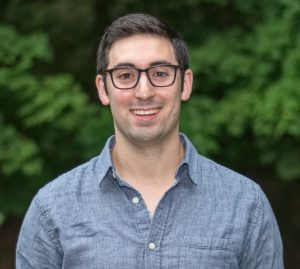
Assistant Professor
University of Washington
Abstract: The Golder Research Team utilizes fundamental principles of molecular structure to control synthetic polymer function. Many of society’s greatest advancements spanning health, sanitation, construction, electronics, and transportation have been enabled by the invention and application of plastics. Simultaneously, these materials have created significant concerns about global sustainability, climate impact, and environmental pollution. My laboratory aims to discover new materials and methods that unveil unexpected phenomena on the macroscopic scale; this overarching strategy will produce next-generation designer plastics and reform how commodity plastics are utilized. In this talk, the team’s efforts towards these common goals will be outlined in the context of recent work centered on: (1) synthetic manipulation of macromolecular architecture through monomer and initiator design, and (2) sustainable polymer synthesis and functionalization.
Organic Seminar
Friday, September 15, 3:30 - 4:30pm, WEL 2.122
Professor
University of Bath
Abstract: With this talk I will introduce an assortment of fluorescent sensors and imaging agents developed over the past 30 years. Such sensors and imaging agents can be used to monitor analytes within physiological, environmental, and industrial scenarios. The interactions between the “chemosensor” and an analyte of choice occurs on a molecular level and as such gathering and processing the information is challenging. Therefore, I will outline the trials and challenges encountered in the development of robust chemical molecular sensors “chemosensors” able to detect such analytes selectively and signal or map their concentration in a biological or environmental scenario. During the talk you will be introduced to a variety of fluorescent probes designed for diols (D-glucose), anions, and redox imbalance. With the goal being the development of chemosensors capable of determining the concentration (and location) of a target species in any medium. Particular attention will be paid to the underlying chemistry associated with the construction of practical chemosensors for both sensing and imaging applications. The main take home message from this talk is that the past ensures that our research walks down the correct path, the present provides us with fascinating and important challenges that need to be solved and the future holds the promise that chemosensors will be able to improve the quality of our lives.
Centennial Visiting Lectureship in Chemistry
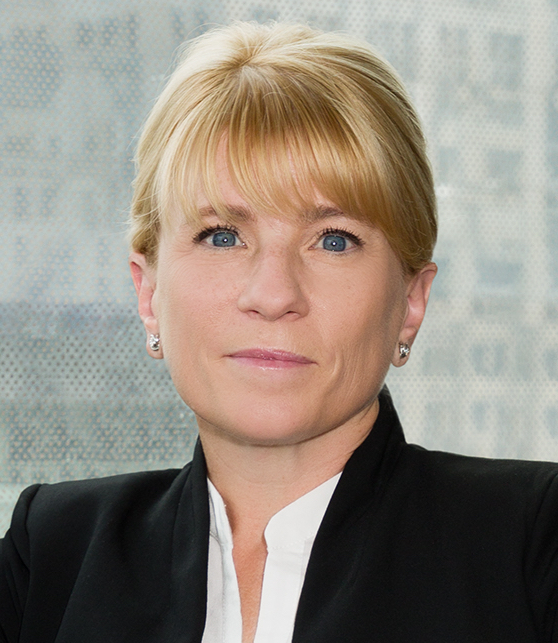
Analytical & Physical, ChemBio Seminar
Thursday, September 14, 3:30 - 4:30pm, WEL 2.122
Professor
Northwestern University
Abstract: To put disease-related biomarkers to work for personalized monitoring of health and disease, new high-performance technologies are needed to enable rapid and sensitive analysis of proteins and other biomarkers. Electrochemical methods providing low cost and direct biomarker readout have attracted a great deal of attention for this application. Recently we developed reagentless sensors that are powerful detectors for in vivo protein sensing (Nature Chemistry, 2021) as well as the analysis of viral particles in situ in the oral cavity (J. Am. Chem. Soc. 2021). This talk will summarize the development of these sensors, their application to a variety of clinical problems, and the development of a range of implatable sensors for in vivo monitoring.
Publications (Google Scholar Citations)
ORCID: https://orcid.org/0000-0003-3360-5359
Analytical & Physical / ChemBio Seminar
Thursday, September 7, 3:30 - 4:30pm, WEL 2.122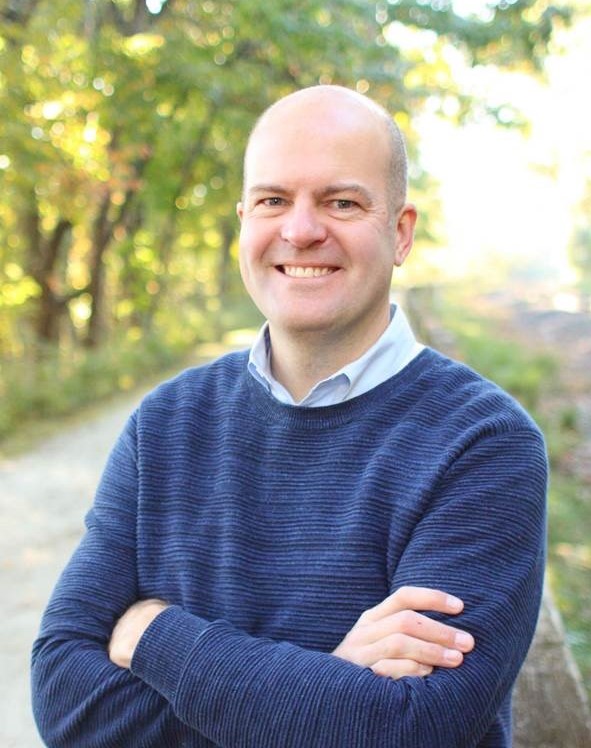
Associate Professor
Texas Tech University
Abstract: The plasma membrane is a complex boundary between the cell and its surroundings. Cells have an array of protein receptors on the plasma membrane that help process environmental cues. The spatial and temporal arrangement of these receptors is critical to function, but the chemical forces driving this organization are not well understood. In my lab, we develop and apply a variety of fluorescence assays to measure membrane protein interactions in situ. This talk will focus on receptor tyrosine kinases (RTKs), which are transmembrane proteins that regulate cell growth, proliferation, and differentiation. Several RTKs are oncogenic and are targeted in next generation anti-cancer drug development. My lab has resolved functionally important interfaces in RTKs using pulsed interleaved excitation fluorescence cross-correlation spectroscopy (PIE-FCCS). PIE-FCCS is especially powerful because it is sensitive to protein mobility, concentration, and monomer/dimer/oligomer distributions. I will describe ongoing work in my group to investigate two RTKS: EGFR and EphA2.
Analytical & Physical / ChemBio Seminar
Wednesday, September 6, 2:00 - 3:00pm, NHB 1.720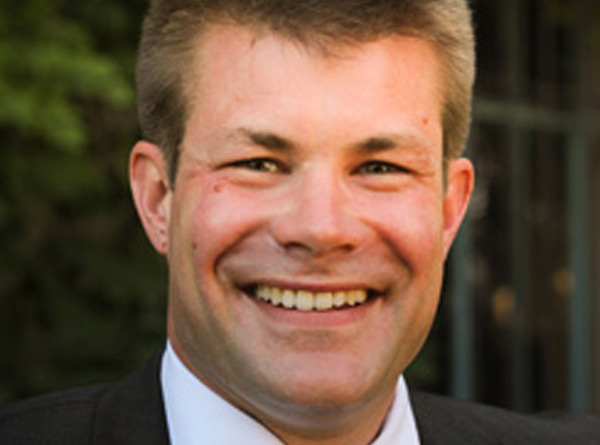
Associate Professor
Florida State University
Abstract: The structural and functional diversity of proteins required for cellular function is accomplished through the formation of proteoforms, different molecular forms of a protein which arise from mechanisms such as alternative splicing. Despite significant advances in biophysical techniques, however, it remains challenging to identify how changes in protein primary structure alter protein function through modulation of their higher-order structures and dynamics. We discuss our progress towards elucidating how changes of the amino acid sequence and post-translational modification of proteins modulate their structural heterogeneity and dynamics using the experimental and computational ion mobility spectrometry/mass spectrometry methods developed in our laboratory. We present a number of case studies that range from small benchmark proteins, such as ubiquitin and ribonuclease A/B, to increasingly more complex systems including the avidin tetramer, monoclonal antibodies, and variants of the full-length trimeric spike protein of SARS-CoV-2
Inorganic Seminar
Richard Lagow Excellence Fund in Inorganic Chemistry
Wednesday, September 6, 3:30 - 4:30pm, WEL 2.122
Professor
Caltech
Abstract: Nitrogen reduction to ammonia is a requisite transformation for life and there is growing interest in developing sustainable technologies for ammonia synthesis using renewably sourced energy. Such approaches can lead to distributed on-demand fertilizer production and may enable ammonia to be used as a zero-carbon alternative fuel. Our group has had an ongoing interest in the study of well-defined synthetic catalysts that mediate nitrogen reduction (N2R) to ammonia (and hydrazine). We are especially interested in the operative mechanisms by which such catalysis occurs. Most recently, we have been pursuing the idea that proton-coupled electron transfer (PCET) pathways for N2R can be more thermally efficient than step-wise ET/PT pathways and have tested this hypothesis via the development of electrochemical PCET (ePCET) mediators that enable electrocatalytic N2R (and other reductive transformations with unsaturated substrates) to be driven at potentials sufficiently anodic that the competing hydrogen evolution reaction (HER) is mitigated. Relatedly, we are pursuing novel catalysts and conditions for photodriven N2R, and systems that enable (photo)electrochemical N2R. Here, visible light rather than temperature, pressure, or electrochemical potential, provides the primary driving force needed for catalytic ammonia generation. This strategy is also being applied towards unsaturated organic substrates.
Organic Seminar
Friday, August 25, 3:30 - 4:30pm, WEL 2.122
Assistant Professor
Durham University
Abstract: Bi-aryls are ubiquitous moieties across organic chemistry playing important roles in natural products, drug molecules and materials. Being able to access selectively substituted bi-aryls however remains a challenge. Due to the identical electronic nature of the aromatic rings within non-substituted bi-aryls, electrophilic aromatic substitution reactions are extremely difficult to control, leading to mixtures of inseparable regioisomers. Within our research group we have a long running programme on exploring the properties and applications of perfluorinated aromatics and heteroaromatics. As part of this research programme, we have developed a perfluorinated pyridine protecting group which allows for electronic differentiation of systems which contain multiple aromatic rings. By using this approach, we have developed methodology which allows us to access highly elaborated bi-aryls with high levels of regiocontrol. We have also been able to access new scaffolds with regioselectivity which does not comply with classical selectivity rules. This presentation will outline the development of this methodology along with our broader work on the application of pentafluoropyridine in organic synthesis.
Organic Seminar
Friday, August 25, 3:30 - 4:30pm, WEL 2.122
Assistant Professor
Durham University
Abstract: Bacterial pathogens can evolve and diversify within hosts, leading to persistent infections that are highly challenging to treat. These evolutionary transitions can be difficult to detect even with state-of-the-art omics techniques, as multiple genetic changes can lead to the same phenotypic outcome. The opportunistic bacterial pathogen Pseudomonas aeruginosa, for example, causes persistent respiratory infections in patients with cystic fibrosis (CF). These infections cause progressive lung disease that severely limits their life-expectancy, with the median age at death estimated to be 30.8 years. Infections are usually established in early childhood, from environmental P. aeruginosa strains which do not pose huge risks to healthy individuals. Because they cannot be cleared by the immune system of CF sufferers, they persist in the lungs for many years. Over time they adapt to the environment of the lung, displaying new behaviours, or ‘pathoadaptations,’ which affect the severity of the disease. Infections become very difficult to treat, as bacteria become resistant to antibiotics and form extended biofilms. I will describe an array of diagnostic molecular probes that can discriminate acute and chronic genotypes of P. aeruginosa based on phenotypic variation in their surface properties linked to important pathoadaptations. Using a combination of fluorescently labelled glycopolymers, this sensing array can distinguish genetically-engineered mutant strains differing in the expression of key virulence factors. The same sensing array can also be used to differentiate genetically variable P. aeruginosa isolates from CF patients sampled from different evolutionary lineages, and samples of the same lineage isolated from the same patient at different time points. This approach could provide the underpinning technology for new diagnostic tools to map the progress of persistent bacterial infections and inform treatment strategies.
Organic Seminar
Friday, August 25, 3:30 - 4:30pm, WEL 2.122
Assistant Professor
Durham University
Abstract: TBD
Seminar tabs are listed in the order of upcoming dates, followed by past seminars (most recent first).

This work is licensed under a Creative Commons Attribution-NonCommercial 4.0 Generic License.